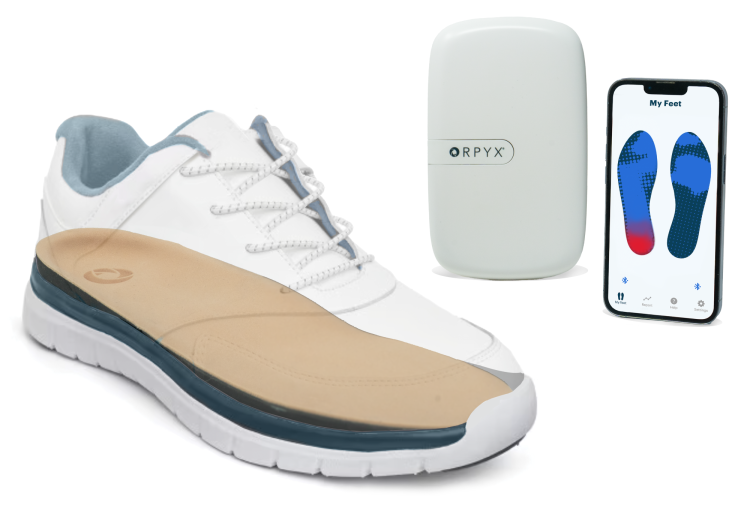Sensory Insole System Trial Results in Significantly Lower Diabetic Foot Ulcer Recurrence Rates

Calgary, AB, Canada (September 26, 2019) - New research reports when patients with diabetes and a previous history of a healed foot ulcer receive audio-visual alerts of sustained, elevated plantar pressure through a novel, sensory insole system there is a signification reduction in diabetic foot ulcer (DFU) incidence.1
The randomized, controlled, multi-site trial, conducted at Manchester Metropolitan University and Lancashire Teaching Hospital in the UK, demonstrated a 71% reduction in ulcer incidence in the group receiving audio-visual alerts and off-loading instructions, compared to the control group that did not receive alerts and instructions. In an additional exploratory analysis of patients with good adherence, defined as wearing the sensory insoles for at least 4.5 hours per day, there was an 86% reduction in DFU incidence compared to the control group.1
Seventy percent of people with diabetes develop DPN which often leads to a lack of feeling in the feet, DFU formation, and in the most severe cases, amputation.2 Under-managed DPN is the number one cause of non-traumatic lower limb amputation.2 These complications cause enormous physical and psychological stress on the patient and are a huge financial burden on the health care system.
Plantar pressure is considered an early indicator of DFU formation.3 The Orpyx® SI sensory insoles are the first system designed specifically to help mitigate this risk by providing the patient with real-time feedback, enabling them to take action. In addition, the sensory insoles monitor variances in plantar foot temperature which is considered a late stage indicator for DFU formation, providing an additional warning parameter to help health care providers treat DFUs which occur in 25% of the diabetic patient population.
Click here to view/download the study.
About Orpyx Medical Technologies Inc.
Orpyx® Medical Technologies empowers people with diabetes to maintain mobility. The company’s core product line, the Orpyx® SI sensory insole system, helps manage and prevent diabetic foot ulcers and limb loss through advanced foot sensor technology and real-time analytics. Orpyx technology is also used by researchers to access clinical-grade plantar pressure data for health and human performance applications in the fields of sports medicine, therapeutic applications and footwear design. Orpyx is focused on collaborating with stakeholders around the world to achieve a healthcare future that is prevention-focused and sustainable in cost. The Orpyx® Medical Technologies website is located at www.orpyx.com.
For more information, please contact:
Media:
Karen Smith
Karen.Smith@Orpyx.com
+1 (210) 823-9604
Investor:
Breanne Everett, MD
Breanne.Everett@Orpyx.com
+1 (403) 472-9949
Abbott CA et al. Innovative intelligent insole system reduces diabetic foot ulcer recurrence at plantar sites: a prospective, randomised, proof-of-concept study. The Lancet Digital Health. Vol.1 October 2019.
The National Institute of Neurological Disorders and Stroke. Peripheral Neuropathy Fact Sheet. https://www.ninds.nih.gov/Disorders/Patient-Caregiver-Education/Fact-Sheets/Peripheral-Neuropathy-Fact-Sheet. Sept 2019.
Armstrong D et al. Diabetic Foot Ulcers and Their Recurrence. New England J of Medicine. June 2017; 376;24. 4. Armstrong DG, Lavery LA. Monitoring healing of acute Charcot’s arthropathy with infrared dermal thermometry. J Rehabil Res Dev. 1997;34(3):317–321.
Orpyx Medical Technologies Supplies Digital Health Platform for NIH-Funded and Johns Hopkins Medicine–Led Clinical Trial on Diabetic Foot Ulcer Prevention

The Honorable David Shulkin, M.D. Joins Orpyx Advisory Board to Advance Veteran Care and Diabetes Prevention Market Growth

Orpyx Launches Sensory Insole Program to Combat >$80B Annual Cost of Diabetic Foot Complications
